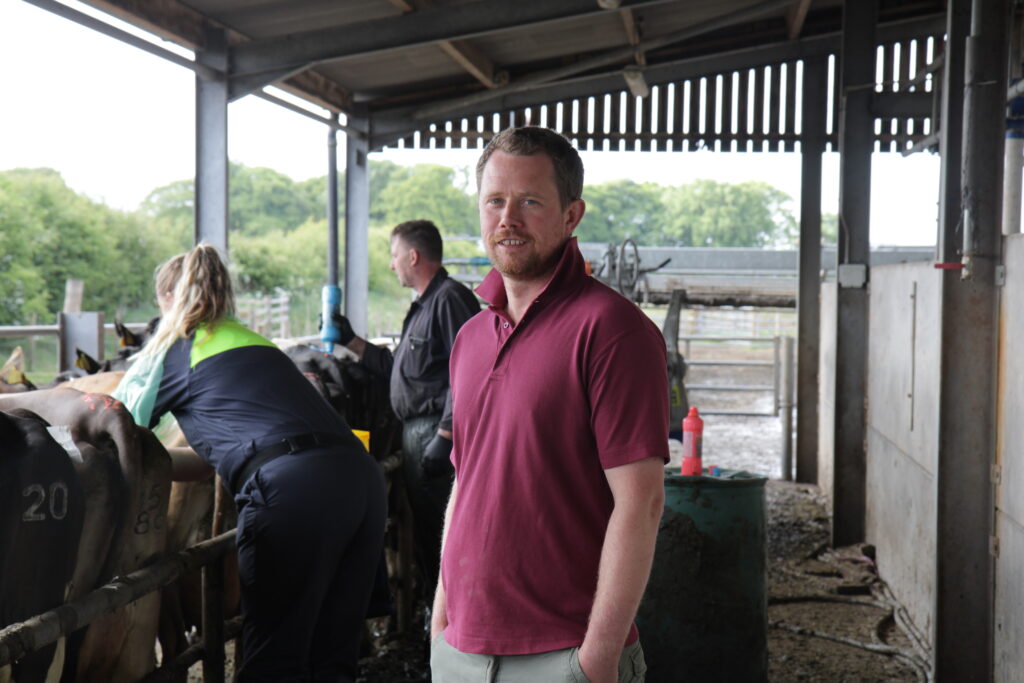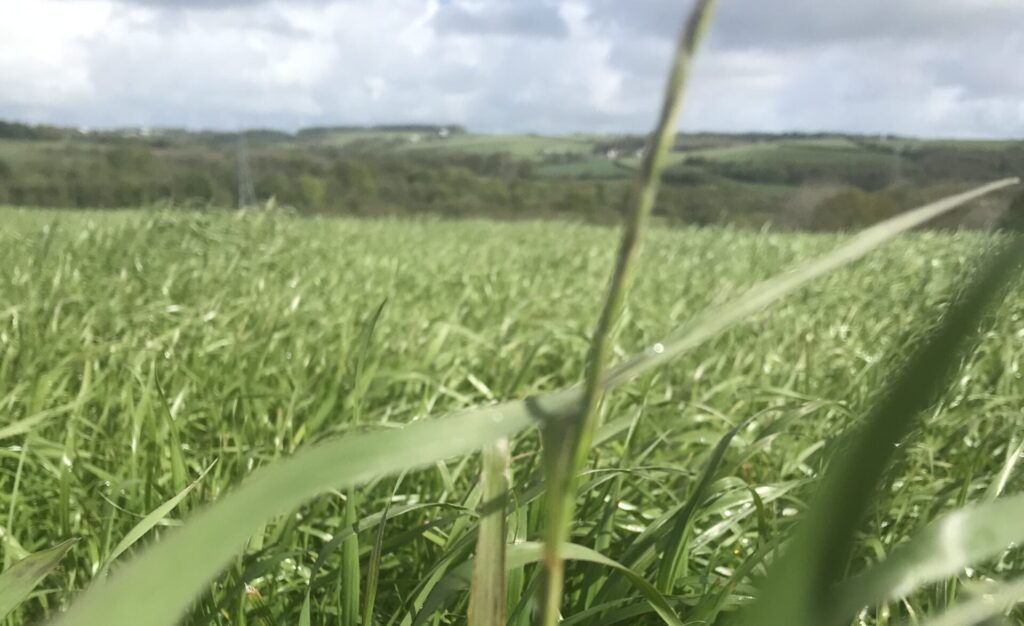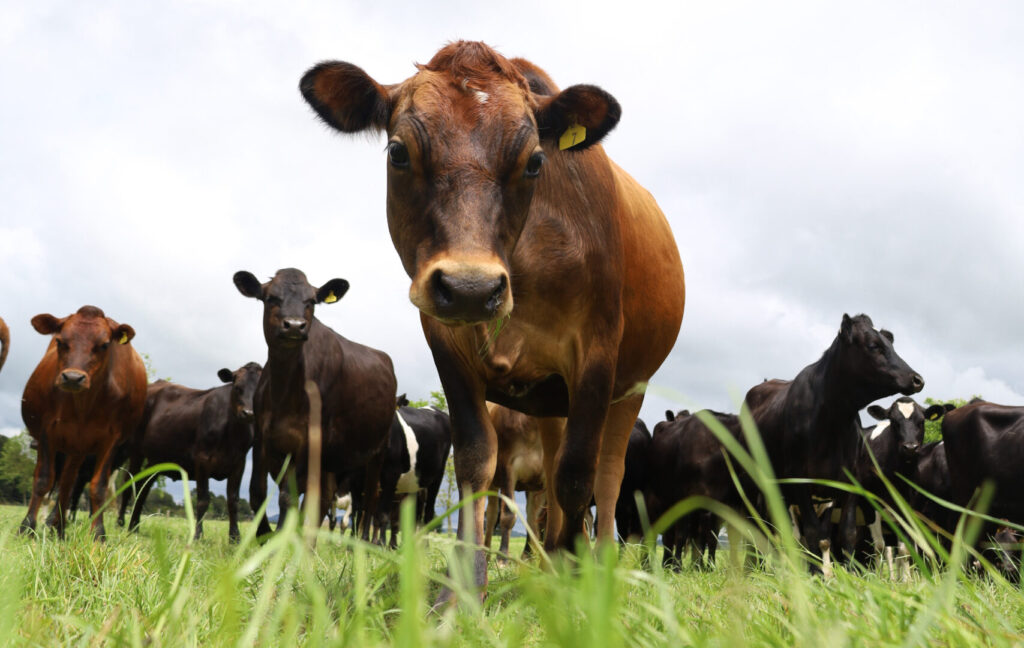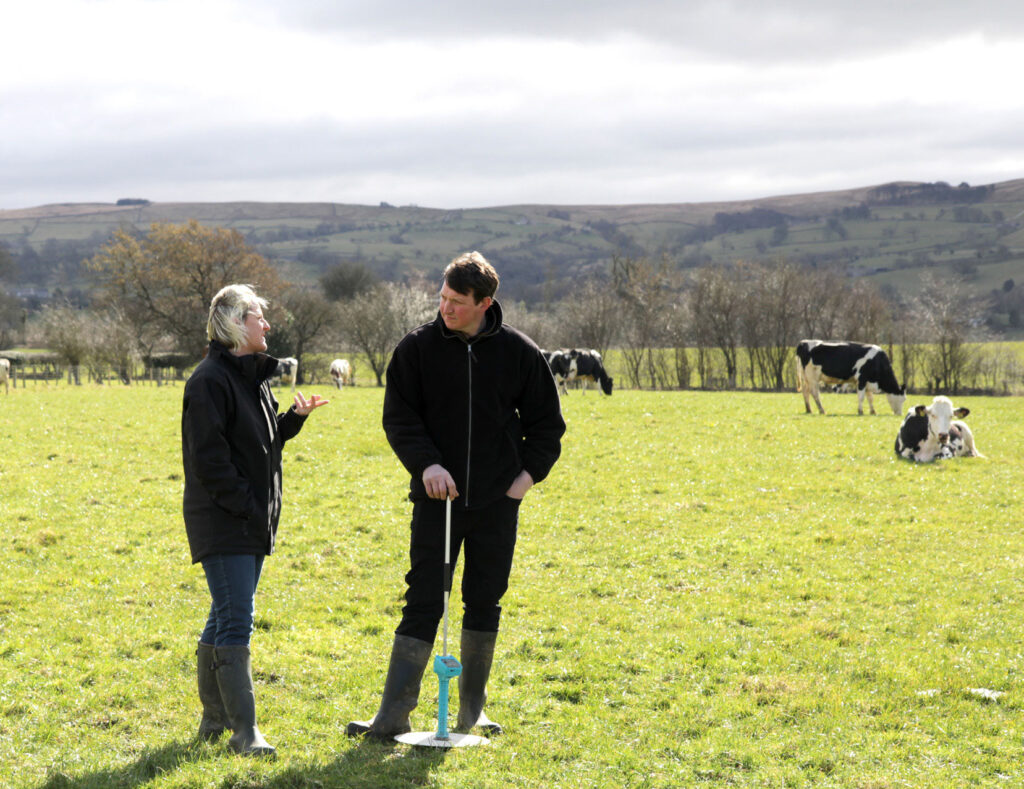Mating is currently underway at Walford College Farm, with 98 out of 199 cows already served at day nine. 24 of these 199 cows are currently ineligible for mating as they have not been in milk for 42 days. This means 56% of the eligible cows have been mated so far. 26 cows were synced at the beginning of mating, which helped achieve this positive result.
27 of the 55 heifers were mated at day nine – 49% of the group. The heifer are now in with teaser bulls. At week four of mating the bulls will go in with the cows. Walford Farm plans on using beef on the cows that are synced and Johnes positive, and only using sexed semen on the heifers.
Current production and feed stats
The cows are producing an average of 27.5l per day with 4.60% fat and 3.50% protein or 2.29kgMS per day. They are currently fed 2.4kgDM of fodder beet, 9kg of concentrates (at 24% protein), 4kgDM of grass silage and 4.7kgDM of maize silage.
The concentrates level increased by 2Kg/head/day from last year due to the drought, with poorer volumes of grass and maize silage cut compared to a normal year. Walford has hired a mixer wagon to reduce wastage of silage through the housed period.
Walford recommendations
With the cost of rearing where it is, sell any dairy heifers that are not planned to be mated as soon as possible.
Strategic use of sexed semen will capitalise on the herd’s mating performance, which is improving year on year. By targeting the top 50% of the herd for replacements, Walford will get greater herd improvement faster.
Use milk recording data from this year to help select the best heifers for sexed semen. Heifers from cows that are within the bottom 50% shouldn’t be mated to sexed semen.
Monitor non-return rates of the cows as you head into the fourth week of mating. This gives an indication of conception rates. Doing this each week will help you make informed mating decisions and to achieve the in-calf targets for this year.
Monitor the hoof health of the teaser bulls to ensure they are fit for work, and don’t let the sweeper bulls put on weight. They need to be fit and lean to perform properly.
For more information on Walford College monitor farm or how these practices could be applied to your farm contact Sean Chubb



